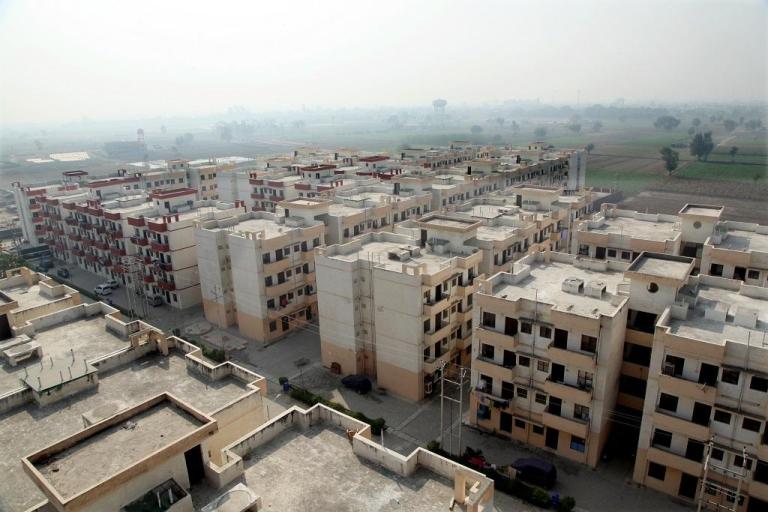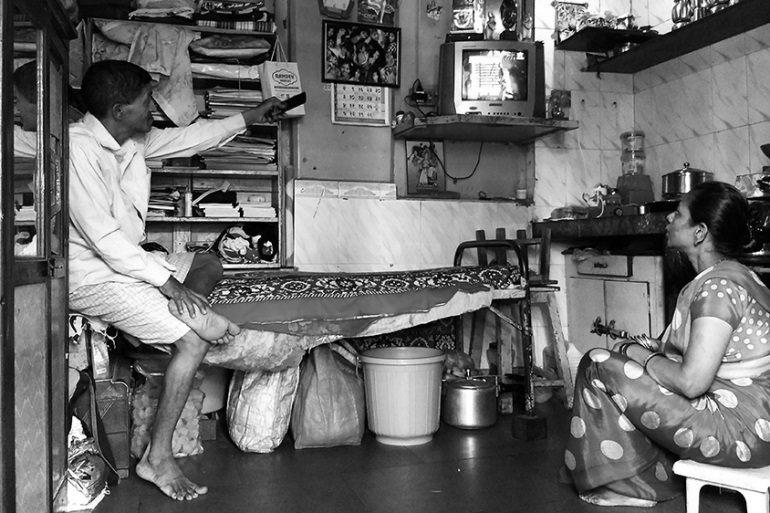Designed as a duplex for a family of three, Sangwan House sits quaintly at a corner plot in Delhi’s Karala Village, translating the client’s vision of having a small house but plenty of open space and green. It’s one of Habitat Design Collective’s (HDeCO) low-cost residential projects and has been designed and completed in INR 30 Lac (USD 43,500).
Planned for a single-family, Sangwan House is a duplex situated in Karala, an urban village near Rohini Sector 22. Taking a cue from the plot location, the form has been designed to accentuate the two open edges, with the facade curving around the corner. A close look at the ground floor plan highlights the four quadrants each of which has distinct functions: a semi-covered porch that also doubles as parking space, a drawing room overlooking the courtyard and the two bedrooms. During festive events, the main door opens up such that the drawing-room and porch become one large space, apt for celebratory functions.
The second floor uses one quadrant for the bedroom while the rest of the three quadrants form a common space housing the family lounge and kitchen in a continuity of the sky-lit courtyard. The kitchen, the hearth of the house, has a very strategic location with a view of both the outside and the entire house from within, giving a sense of control as well as security. The patterned brick wall highlights this on the facade.
Carrying forward the planning concept, the front facade is also divided into four quadrants, the top left highlighting the kitchen with an exposed brick pattern, and the semi-covered porch as a void. The balcony follows the curve of the form, extending on one side till the plot rear edge. The balcony and the courtyard are instrumental in achieving a visual and sensory connection with nature.
Sangwan house has been constructed using passive building techniques like rat-trap bond walls, which passively insulates the building, increasing the time-lag and reducing material consumption. Further, , to reduce heat gain from the terrace, the top slab has been made deeper by using inverted beams and cow-dung-cake filling and with reflective China mosaic finish.
The sky-lit courtyard, a quintessential Indian architectural typology, brings in daylight in the deeper interior spaces and also facilitates cross-ventilation. The material palette for the residence has been restricted to easily sourced local material, like clay bricks, Kota stone, locally manufactured floor tiles and wooden door frames from the village. The exterior is finished in long-lasting granular texture, reducing maintenance cost and keeping a contextual coherence.
-Habitat Design Collective
Diagrams –
Project Facts-
Name of the Firm: Habitat Design Collective
Name of the Principal(s): Subhashree Nath, Gagan Yadav
Title of Your Project.:Sangwan House
Select project category: Small Residential Project
Project Status: Completed
Project Location: Rohini, Delhi, India
































